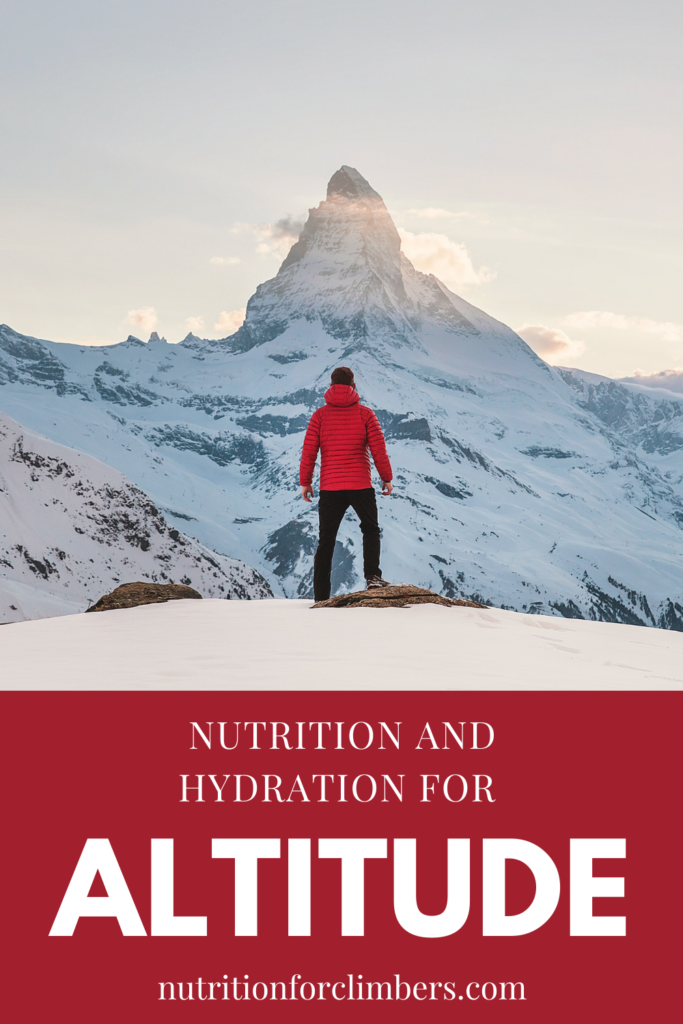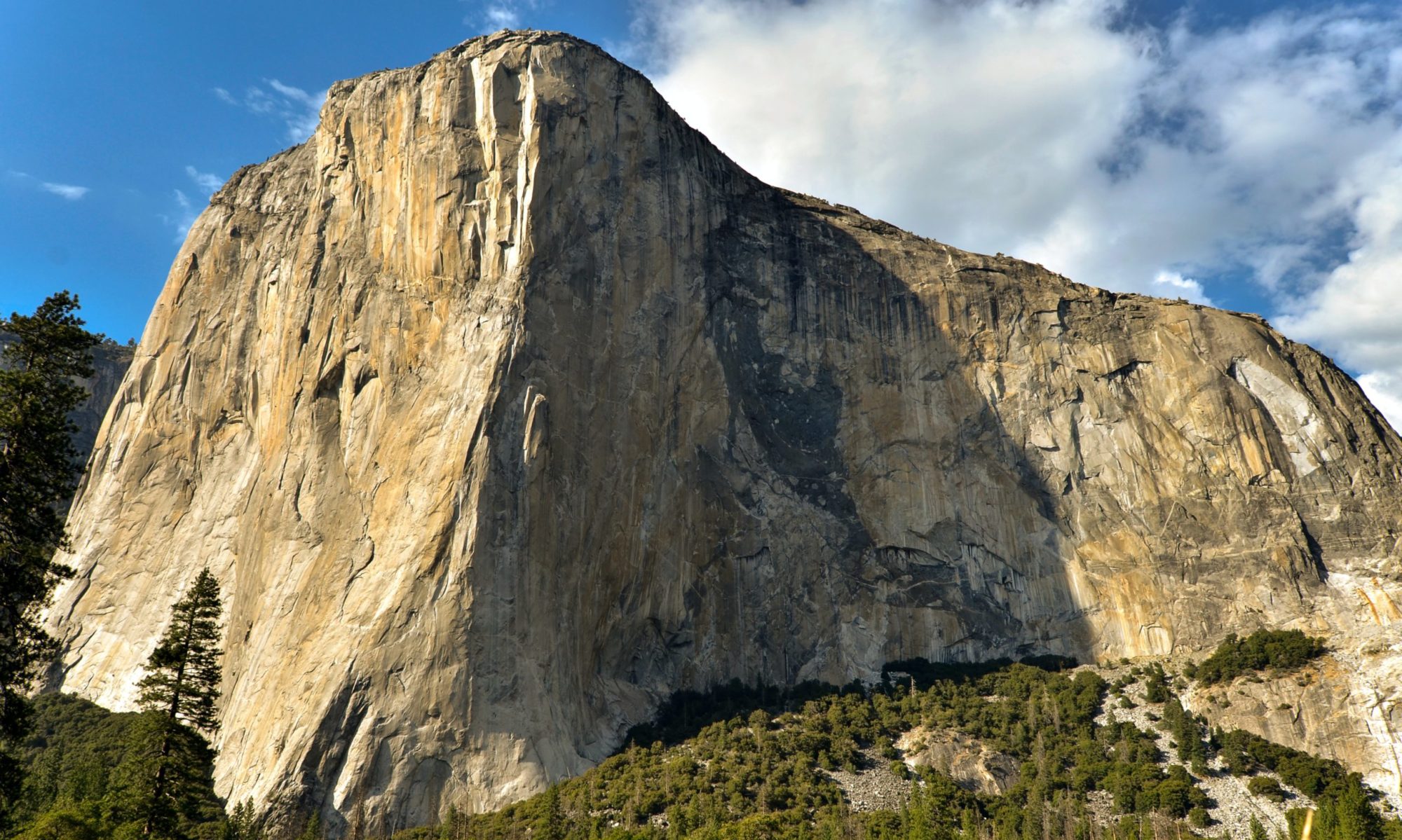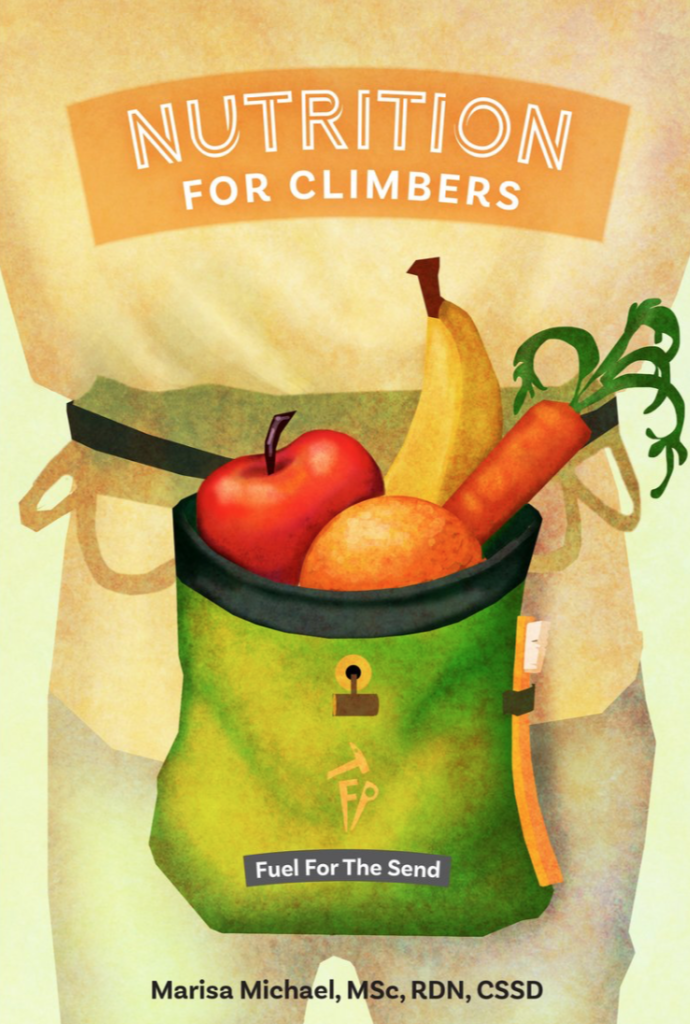
It’s any climber’s worst nightmare: getting altitude sickness on the big trip you’ve been training for. Months of planning fall apart when you can’t get your body to adjust to the altitude!
How do you avoid altitude sickness? It’s not always a guarantee that everything will be ok, but with a few savvy hydration and nutrition hacks, you will set yourself up for the best trip possible.
Having a nutrition and hydration plan are key to any high altitude adventure. If you don’t have a strategy, you may find yourself fatigued, injured, or sick.
First, how is “high altitude” defined? It depends on whom you ask, but usually it is around the following:
- Lower altitude: 1000-2000 meters (3280-6561 feet)
- Moderate altitude: 2000-3000 meters (6561-9842 feet)
- High altitude: 3000-5000 meters (9842-16404 feet)
- Extreme altitude: >5000 meters (>16404 feet)
What happens to the body at high altitude?
A few things can happen! The air is thinner, meaning the oxygen molecules are spread farther apart than at sea level. This means you may feel a bit short of breath for every inhale. You’re simply getting less oxygen per breath that you’re used to–especially if you live at lower altitude and are going up to high altitude.
Since iron is involved with delivering oxygen to tissues in your body (lungs, heart, muscles), it’s important to have adequate iron stores.
Tip 1: Get your iron levels checked about 6 weeks before your trip
Make an appointment with your doctor to get a full iron panel. They’ll know what that means! It usually includes:
- Serum iron
- Total iron binding capacity
- Ferritin stores
- Transferrin saturation
If any deficiencies are detected, your doctor can recommend a correct dose and form of iron to take. It’s not a good idea to just take iron supplements on your own, especially if you don’t even know if you are deficient or anemic.
Food sources of iron that are good to include in your diet include:
- Shellfish
- Spinach
- Lentils
- Beef
- Quinoa
- Turkey
- Tofu
- Dark chocolate
- Fortified breakfast cereal
Cooking in a cast iron skillet and eating foods with vitamin C help iron absorption as well (citrus foods and berries are common sources of vitamin C).
Tip 2: You need enough calories at high altitude
Alpinists and climbers that spend a lot of time at high altitude sometimes unintentionally lose weight. This can be due to a number of reasons, including the fact that your body is under stress and uses more calories, you may not have access to as much food as usual, and you are working harder than usual due to your outdoor activities. Appetite is sometimes decreased in higher altitudes, which also makes it difficult to get enough food.
To combat unintentional weight loss and make sure you’re well-fueled, try eating high calorie foods, (trail mix, nut butters, fluids with calories, protein bars, chocolate, ghee) adding fat (oils, butters, sauces, gravies) to foods, and packing more food than you think you will need.
Eating the right foods (carbohydrates and calories) can help with altitude sickness!
Tip 3: You need enough fluids at high altitude
A good hydration strategy is key to successful high altitude trips! Your body needs more fluids because not only is it stressed, but the air is usually more arid (less moisture). With each breath, you lose some moisture from your body. Sweating, respiration (breathing), and urinary losses are all greater at high altitude.
There is about a 3% decrease in exercise capacity for every 300 meters above 1500 meters. That can add up to a big difference as you ascend!
Overall blood volume may decrease, which is a bad thing for your exercise performance. With each heart beat, your body is pumping less blood and less oxygen throughout your body. This can lead to fatigue and failed sends.
Always pack more water than you think you need, and/or bring along a water filter if your route has water nearby. Research shows that people are more prone to drink adequate amounts if the water is flavored. Enhance your fluids by using Gatorade or an electrolyte mix, such as Nuun or Skratch Labs.
Electrolytes are also crucial to hydrate properly. You lose sodium, calcium, magnesium, and potassium in sweat. If you’re only drinking water and not replacing electrolytes, you’re setting yourself up for dehydration or over-hydration. Symptoms include nausea, fatigue, and headaches.
Aim for at least 3-5 liters per day (13-21 8-oz cups). Don’t rely on thirst, as this can be unreliable in extreme conditions. Drink at regular intervals every 20-30 minutes to stay ahead of the hydration game. If you become dehydrated, it can take hours or even a full day to recover. Don’t let this happen to you! For an amazing and useful course, check out our Perfect Hydration for Athletes on-demand course!
Tip 4: Eat enough carbohydrates for high altitude adventures
Carbs are king when it comes to climbing! At high altitude, the hormones cortisol and adrenaline kick in. This is a stress hormone that demands more carbohydrates. In addition, the work you are doing to climb or hike is also using carbohydrates.
Fuel regularly by eating every 20-30 minutes. Eat a few bites of carbohydrate-rich foods, such as:
- Sports gummies and chews
- Fruit snacks
- Dried fruit
- Fruit leather
- Crackers, chips, pretzels
- Sports drinks with carbs
- Gu or gels
- Swedish Fish or Sour Patch Kids
- Bagels
If your blood sugar drops, you may feel weak, shaky, dizzy, fatigued, or have a headache. Luckily, with some carbohydrates in your body, you can recover from low blood sugar within about 20-30 minutes. Take a rest and eat some food. Aim for about 30-60 grams of carbs per hour of activity.
You may also want to try beet juice, powder, or shots. There is some evidence that suggests the nitrate in beets (which converts to nitric oxide in your body) may help at high altitudes. Nitric oxide opens up blood vessels to allow for more blood flow and oxygenation.
Tip 5: Always bring more food and water than you think you will need!
You never know when your trip will take longer than planned, conditions on the mountain may change, or someone around you may need some food or fluids. Be prepared for any situation.
Remember, carbs and fluids are your friend! With the right fueling and hydration plan, you’ll have a successful trip and feel amazing and energized while climbing!
~This is general information only and not medical advice. Always consult with your healthcare professional before undergoing any diet or lifestyle change.
Want to learn more? Check out our on-demand masterclass Nutrition for Climbers, or our book Nutrition for Climbers: Fuel for the Send.
References/further reading
Nutrition recommendations for high altitude training
Kechikan, D. (2011). Optimizing nutrition for performance at altitude. Journal of Special Operations Medicine, 11, 12-17.
Ladd E, Shea KM, Bagley P, Auerbach PS, Pirrotta E, Wang E, Lipman GS. (2016). Hydration status as a predictor of high-altitude mountaineering performance. Cureus, 8(12): e918.
Ross M, Martin DT. (2015) Altitude, cold and heat. In Burke L and Deakin V (eds) Clinical Sports Nutrition (5th). Sydney, Australia, McGraw Hill, pp767-791


Great article that clearly explains what can cause High altitude sickness and great ideas on how to lessen your chance of getting it. I have been fortunate so far in that I haven’t gotten high altitude sickness but I have a close friend who seems to be succumbing to it more and more. I definitely plan on sending him this article.